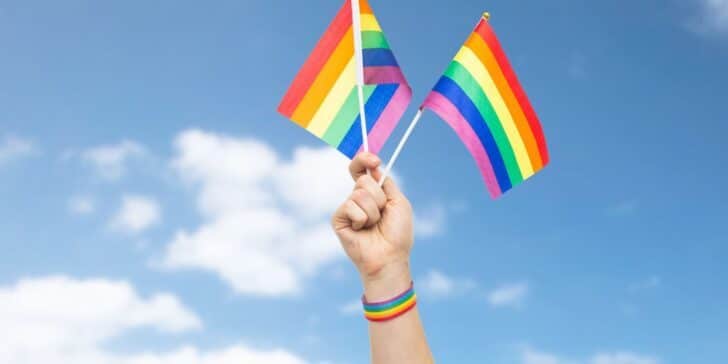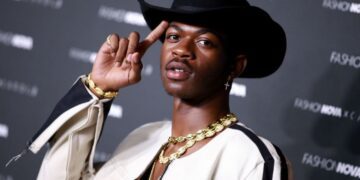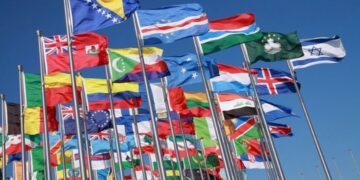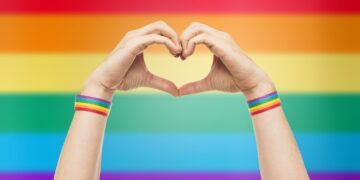You may see the famous pride flag flying throughout the year in many countries. This well-known rainbow flag has become a symbol of the LGBTQIA+ rights movement, representing diversity and unity with its many colors.
Although you might be familiar with the sight of the pride flag, do you know much about where it came from?
Let’s dive into the fabulous history of this brightly-colored flag!
The pride flag originated in San Francisco.
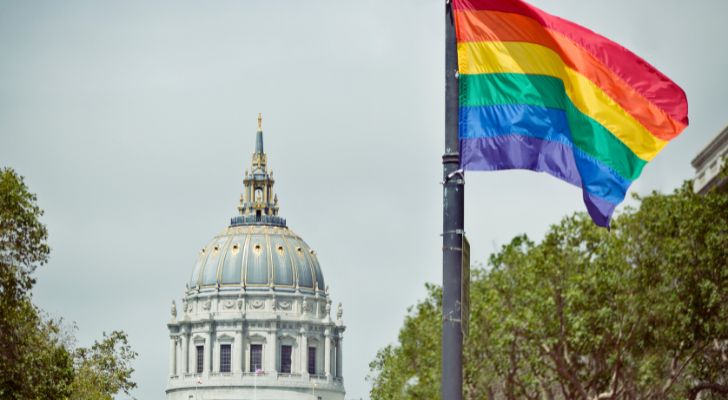
Artist Gilbert Baker, who lived in San Francisco and was an openly gay activist for LGBTQIA+ rights, is credited with designing the pride flag in 1978.
Gilbert Baker designed the flag after meeting Harvey Milk, the first openly gay man in Californian public office.
Milk encouraged Baker to create a symbol of pride for the LGBTQIA+ community. Baker chose a multi-colored design that reflected the rainbow, a unique part of the natural world.
The flag was first displayed at the San Francisco Gay Freedom Day parade on June 25, 1978. A group of volunteer activists, including Gilbert Baker, made the flags by hand.
Today, thousands of these rainbow flags are mass-produced and seen at pride festivals worldwide!
It replaced the pink triangle as a symbol for the LGBTQIA+ community.
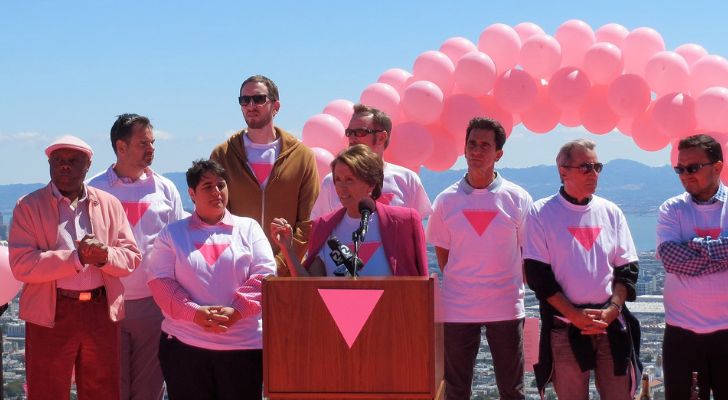
During World War Two, gay men in Nazi concentration camps were identified by marking them with a pink triangle. This became a painful symbol for the LGBTQIA+ community, linked to memories of a difficult time in history.
Despite this, many gay people tried to reclaim this symbol with a positive meaning and wear it proudly.
Activists like Gilbert Baker believed the LGBTQIA+ community deserved a new and empowering symbol. For him, the pink triangle still held memories of Hitler and the terrible Holocaust.
This was part of his inspiration for creating something entirely new – the flamboyant and proud rainbow flag!
Each color of the pride flag represented something different.
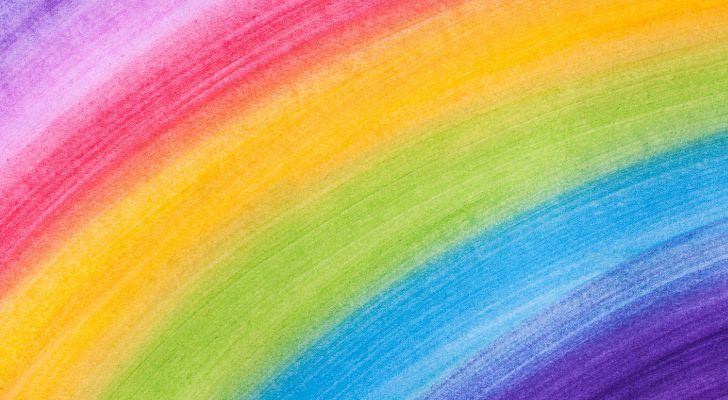
The original pride flag had eight stripes of different colors – pink, red, orange, yellow, green, turquoise, indigo, and violet. Each color had a different meaning – sex, life, healing, sunlight, nature, magic and art, harmony, and spirit.
As plans to mass-produce the flags got underway, Gilbert Baker and his team hit some snags. The hot pink color in Baker’s original design could not be easily produced in large quantities.
The pink and turquoise were removed to ensure that the flag still had an even number of stripes (it now had six).
The indigo stripe was later changed to a standard shade of blue. This adjusted version of the rainbow flag was used for many years, becoming a well-known symbol of the LGBTQIA+ community.
A mile-long pride flag broke the world record in 1994.

Gilbert Baker created an extra-large pride flag to celebrate the 25th anniversary of the Stonewall riots. The flag measured one mile (1.6 kilometers) long and entered the Guinness Book of World Records as the largest flag in the world ever made.
The 1969 Stonewall riots in New York were considered a turning point in the history of LGBTQIA+ rights. Activists and police clashed for almost a week after law enforcement officials raided a gay club.
It was a moment that continues to be remembered by the LGBTQIA+ community.
The creation of Gilbert Baker’s mile-long pride flag was also a huge moment in history. It was unveiled at Key West Pride in Florida and required 2,000 people to carry it through the streets!
Not only did it break world records, but it also firmly established this rainbow flag as the global symbol of LGBTQIA+ pride.
One of the original pride flags now lives in a San Francisco museum.
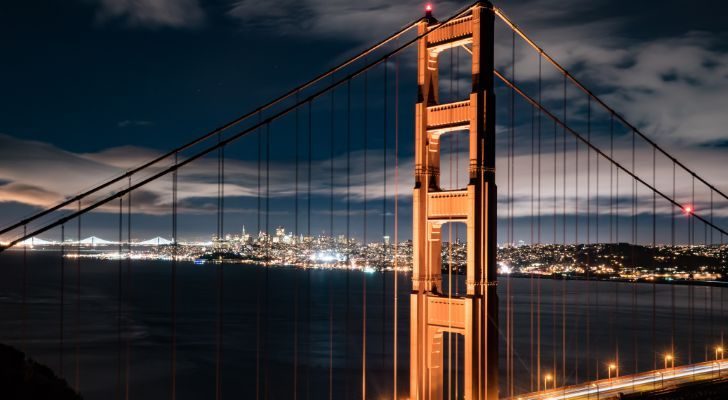
In April 2021, the LGBT Historical Society’s museum adopted one of the very first pride flags. The museum in Castro district, San Francisco, is located in one of the most famous gay areas of the city, which Gilbert Baker called home.
Baker lived until 2017 and kept many famous items in his apartment. When his home was cleared, Baker’s sister handed over one of the original rainbow flags to the Gilbert Baker Foundation.
It was flown at the 2019 New York Pride Parade, marking 50 years since the Stonewall riots.
However, people were unaware this was one of Baker’s first pride flags! It was only after careful examination that they realized it was a genuine item and put it in a museum.
The Pride Flag made progress in the modern world.
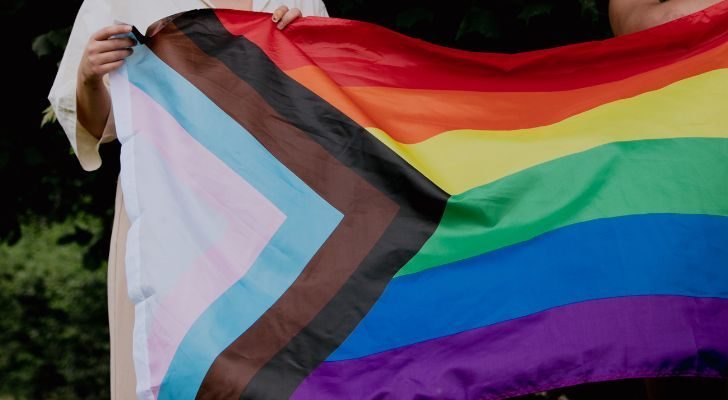
Since its creation in the 1970s, Gilbert Baker’s rainbow flag has inspired many other designs. In 2017, Philadelphia introduced a new design with additional black and brown stripes to represent racial equality and diversity.
The following year, we embraced the Progress Pride flag, which features pink, pale blue, and white stripes to honor marginalized people of color within the LGBTQ+ community, as well as the trans community and individuals living with HIV/AIDS.
Fast-forward to 2021, and the Progress Pride flag included the intersex flag, featuring a purple circle on a yellow background.
The Many Flags of LGBTQ+
Other flags you may notice include the Lesbian Pride Flag, Bisexual Pride Flag, and Transgender Pride Flag. These are often seen at parades and events around the world alongside the traditional rainbow flag.
The aim of all the flags is to raise awareness of the challenges and experiences of those in the LGBTQIA+ community. It allows people to celebrate their differences and show their support for the causes they care about.
Here’s a handy infographic about the flags of the LGBTQ+ world!
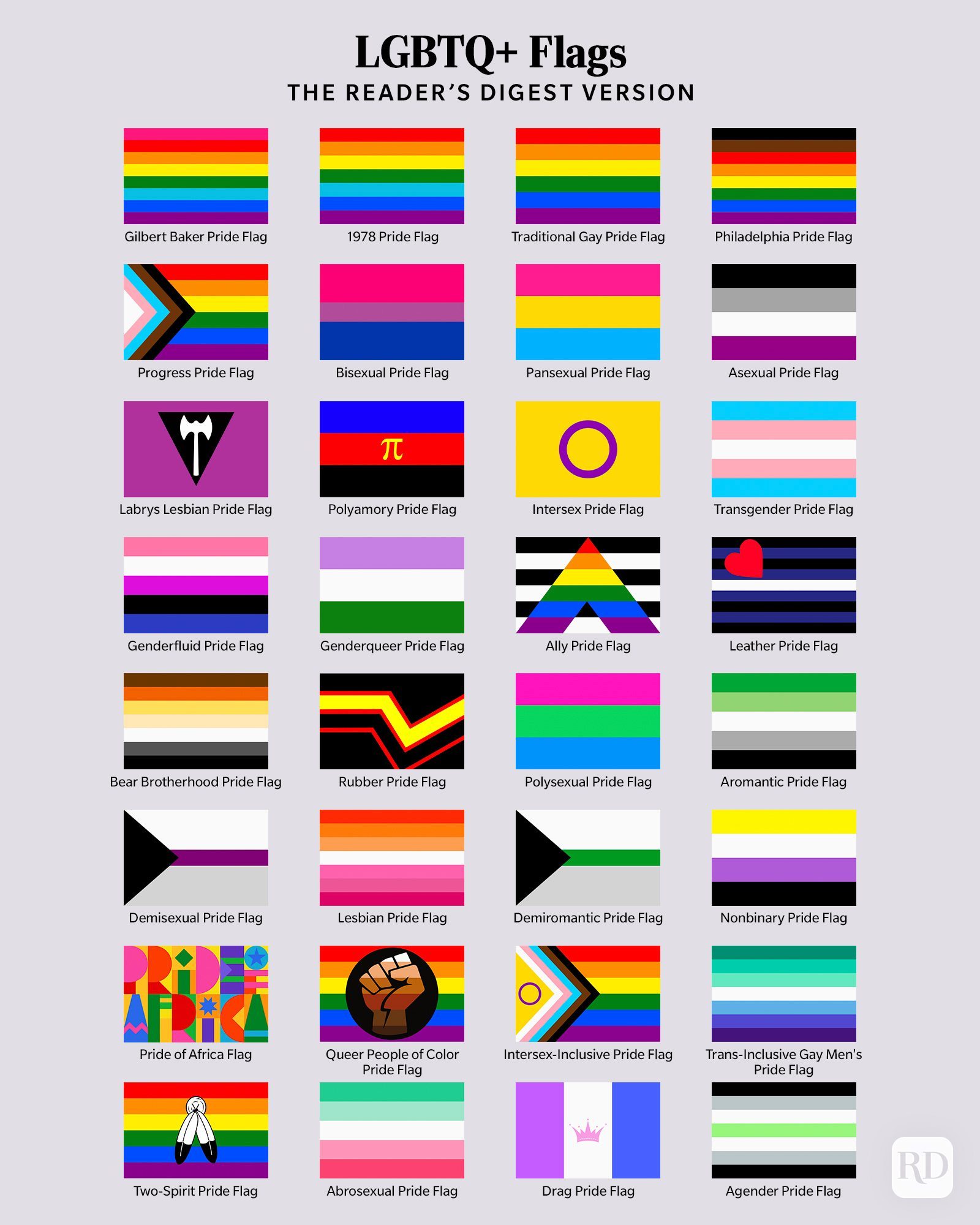
Did you ever think there were so many fascinating stories behind the popular rainbow flag?
From its beginnings to the present day, the pride flag has continued to evolve and act as a colorful symbol of LGBTQIA+ activism and rights.
Next time you see this flag in a parade or flying from a town hall, you might remember Gilbert Baker’s fabulous story and why this rainbow has become so important.

